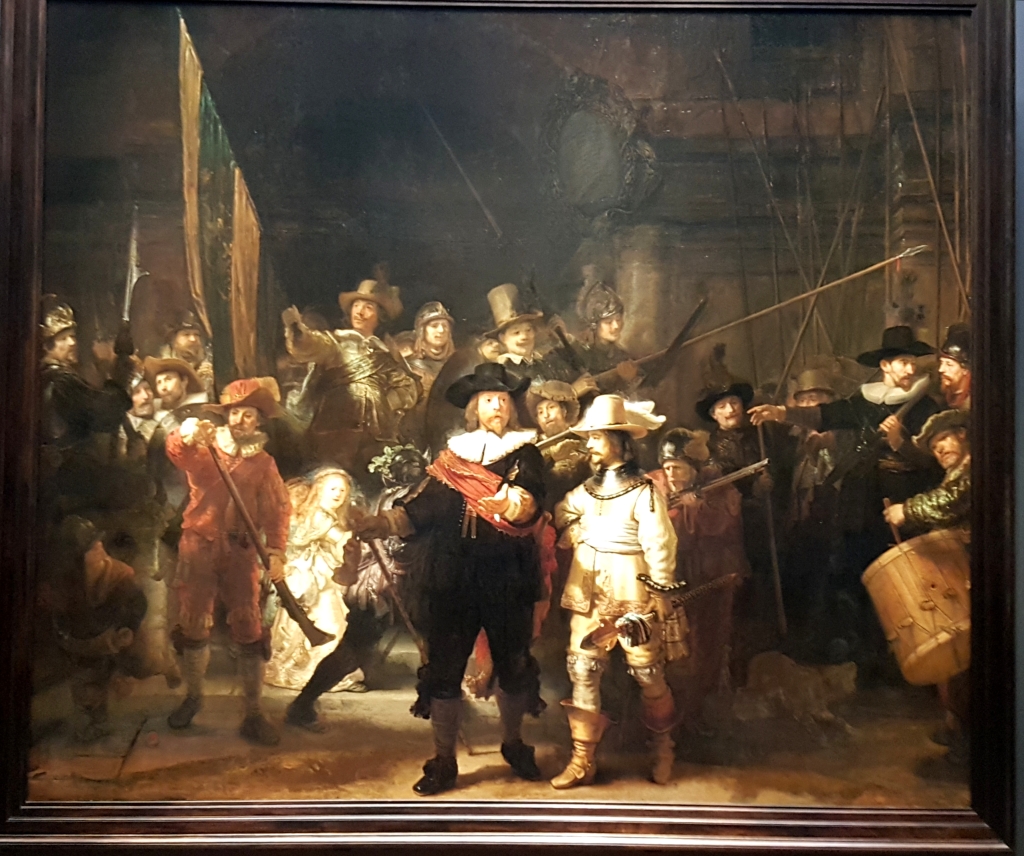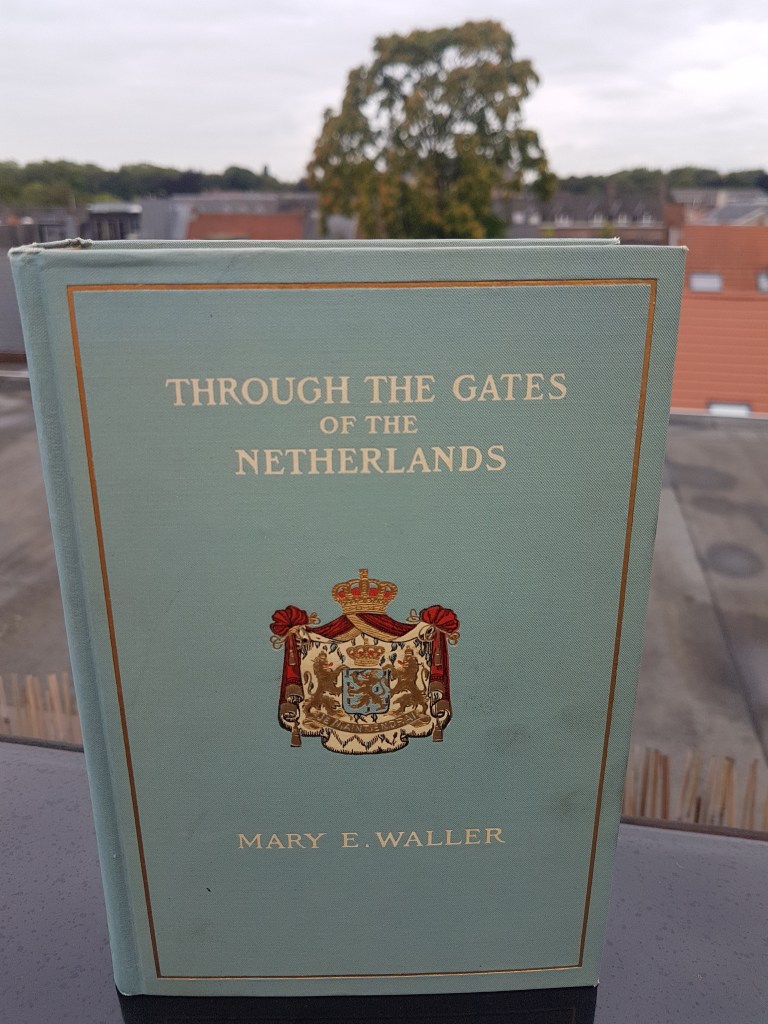One could be forgiven for expecting any post about the Netherlands most prestigious art museum to gush about Rembrandt’s The Night Watch, the impressiveness of Bartholemeus Van Der Helst’s Civic Guard paintings, or the delicate beauty of the The Milkmaid by Jan Vermeer. There is no doubt when you visit Amsterdam that you should thoroughly enjoy all of the above.

But if you really want to cut through the bull and get right to the heart of 17th century Dutch painting, you need go no further than…

Whoever wrote the plaque description for this painting writes that the artist of this self-portrait “portrayed himself here as utterly self-assured.” The Rijksmuseum is full of dutiful citizens looking “self-assured”, but I would argue that Jan Steen is not taking himself at all seriously or self-assured but rather is mockingly presenting himself in a serious light. There is something both arrogant and self-deprecating, like the guy that used to work at the video store judging your rental or a gamer/hacker type irritated by a simple computer question, but with the inner-self laughing hysterically.
In a 1909 book called Through the Gates of the Netherlands, a wealthy American housewife named Mary E. Waller described her experiences moving to the Netherlands on the whim of her husband. She conveyed her brewing frustration with some the 17th century Dutch art:
…the vanity of the Dutch is never more in evidence than in memorializing their civic honors by having their portraits painted by the wholesale. No one doubts but they were good men — some of them very good-looking ones — and the best citizens, but… the line must be drawn somewhere.
Through the Gates of the Netherlands by Mary E. Waller (1909)

I feel the gist of the author’s meaning is precisely this vanity of 17th century Dutch portraiture that Steen is somewhat mocking. Of course what one person writes in 1909 about Dutch art is not the end all be all. But the author sets a good example for all of us that it is ok to say Hey, what is so great about a painting with a bunch of testosteroned dandies? If the Night Watch doesn’t connect with you, the Night Watch doesn’t connect with you. Art is about making your own personal discoveries. And this is the spirit of Drunken Masterpieces, and at the Rijksmuseum, there is no shortage of those. However, don’t entirely dismiss the Civic Guard paintings for they foreshadowed what would become the theme of my visit. The beer glass in Dutch art.

The Merry Drinker Fiddler and the Berkemeyer
There would have been no better centerpiece to this blog post than my all-time favorite brewtiful painting, The Merry Drinker by Frans Hals. However, Drinker was apparently off enjoying an Estrella Damm in Madrid during my most recent visit. So it was next man up and it is with no disappointment that I introduce The Merry Fiddler by Gerard van Honthorst or better known as Gherardo della Notti (Gerard of the Nights). Better known as in better known to the 18th century art world. I was completely unaware of this fact until recently. Honthorst was born in Utrecht, Netherlands and belonged to a group of painters who were deeply inspired by one of my other favorite artists, Caravaggio. The della Notti nickname derived from his talent at nocturnal lighting.

At first glance, it would be tempting to think of this as a Frans Hals style painting. While the subject matter is definitely Frans Halsish, the style is more baroque and colorful, cleaner in the brush strokes. There is no foreshadowing of impressionism here as is occasionally the case with Frans Hals. Here the ambidexterity of the fiddler is showcased as he raises both his fiddle and beer glass. The glass he is holding is a Berkemeyer glass characteristic with its conical-shaped bowl and thick nobby stem. The same type incidentally that the Merry Drinker is holding. The knobs original purpose was to make the glass easier to hold on to with greasy hands.
The Berkemeyer was a tradional beer or wine glass made in the Netherlands and Northern Germany in the Middle Ages. Over time, the shape evolved into a rounder, more egg-shaped bowl. Also the stem became somewhat longer with a variety of decorations and the foot became more prominent. This latter design was referred to as the Roemer glass.
Berkemeyer becomes a Roemer
In Still Life with Cheese by Floris Claesz van Dijck, we see how the Dutch loved to paint their breakfast. The “Dutch breakfast” is a common still life theme depicting piles of cheese. In the foreground is a short stout glass with a more rounded bowl, but not yet quite egg-shaped. Comparing this to other references on the internet, this seems to be an early version of the Roemer glass, or a late Berkemeyer. Pick your poison. And spend a minute or two admiring that cheese.

Van Dijck was Delft-born but lived in Haarlem. Incidentally, he was the second cousin of brewer Cornelis van Rijck who ran the De Olyphant brewery in Haarlem, a building which still stands today. But in 1600’s Haarlem, I am sure everybody had a brewer relative.
A No-Doubt Roemer
Here we see an example of a Roemer glass. The bowl is much more prominent, the egg-shape is evident, and the stem is more elongated. This is Still Life with a Gilt Cup by Willem Claesz Heda. Heda was another Haarlem painter with an impressive talent for depicting metal and glass in his still lifes.

Do All Still Life Painters Have Claesz in Their Names?
Pieter Claesz was born in Berchem, Belgium which people who travel by train from Antwerpen Centraal station know is the annoying stop two minutes after departure where mobs of people usually get on. He, like Antwerp-born Frans Hals, escaped to Holland during the war of Dutch Independence with Spain. Here a Roemer glass appears subtly behind a skull in a surreal depiction of an artist’s studio. Is that supposed to warn me?

Two Roemers in Action (by Jan Steen)
Where would Drunken Masterpieces be without Jan Steen? More on him in an upcoming post. For now, let’s relish in his displays of everyday life, because in everyday life, we like to excessively drink beer from our Roemer glasses.
The first is The Drunken Couple where you can almost hear the husband proudly slur that he outdrank his passed out wife. A cat appears ready to pounce on the pipe dangling precariously from the wife’s hand and a picture of an owl above the husband’s head gives a reminder of the Drunk as an Owl proverb.

The second shows not just a couple but an entire Merry Family getting sloshed. The patriarch, displaying a similar ambidexterity as Honthorst’s The Merry Fiddler, raises his Roemer in song. You can almost hear the chorus to Take Me Home, Country Road if you listen hard enough. Steen loved to show kids getting other kids drunk as a warning against familial excess.

Final Words
I collect beer glasses. Oh, I am somewhere in the neighborhood of about 180 if I include all of the varieties that I have picked up around the world. Yes they are a pain in the ass to keep clean on my display case. But wanting to drink beer out of a special glass is nothing contemporary as this trip thru the Rijksmuseum taught me. But if you don’t have a Berkemeyer or a Roemer at your disposal, by all means, drink it right from the pitcher.


Who knew that the Roemer could be such a fun and inventive looking-glass through which to appreciate art? 🙂
LikeLike
Great presentation of the alcohol in art at the Rijksmuseum. You don’t by any chance live in Amsterdam? I am looking for a tour guide for the Rijksmuseum who can do a tour with a focus on alcohol themes, much like your Drunken Masterpieces tour, just with an actual guide who also knows art history. The visit will be in May 2022.
LikeLiked by 1 person
Hello Diane, I live near Antwerpen, Belgium. Sounds like a great idea! I enjoy writing those DM posts a lot although I am more of an admirer of art than a historian. I am very interested in the details of your idea. If you would like to be in touch, please email me at itsabrewtifulworld@gmail.com. 🙂
LikeLike